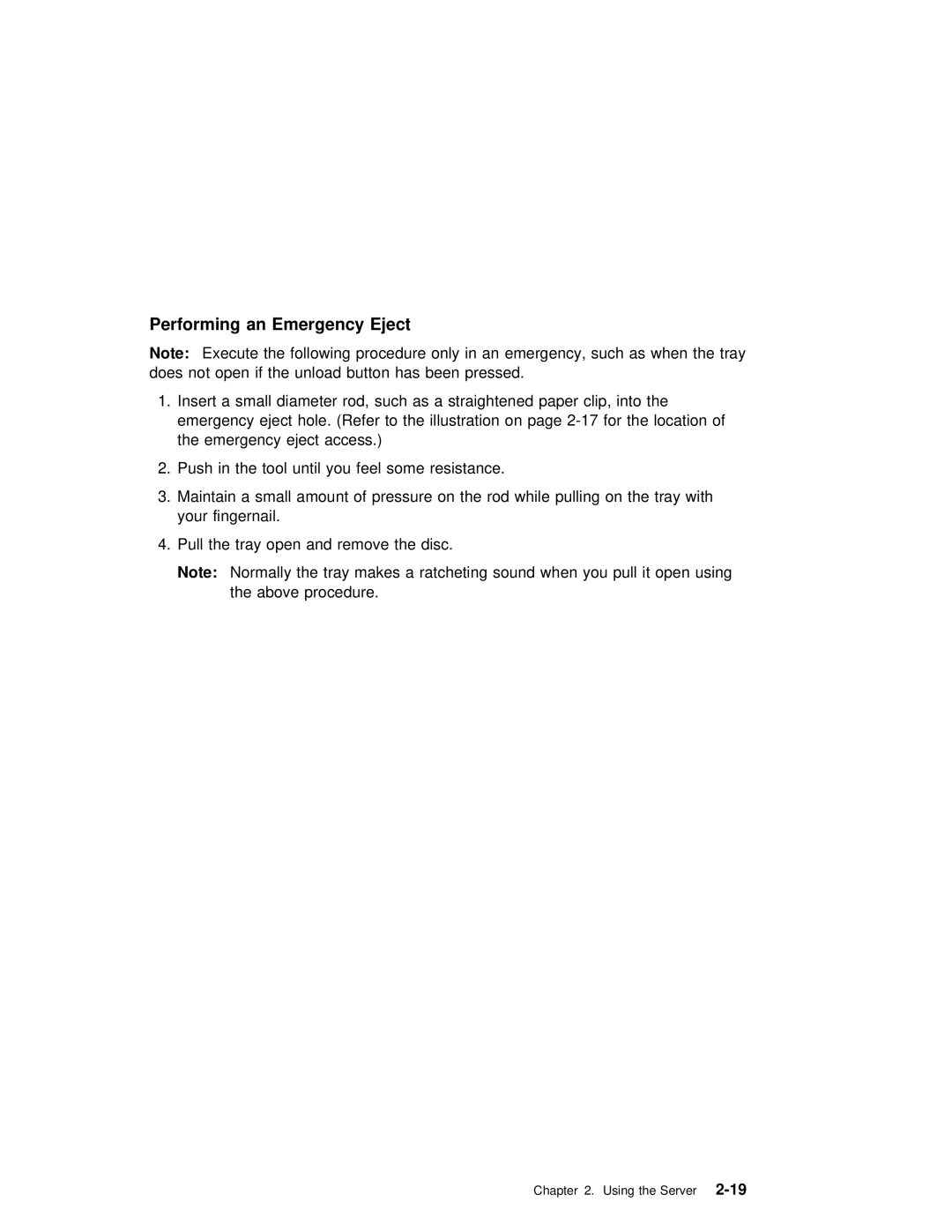Performing | an Emergency | Eject |
|
|
|
|
|
|
|
| |||
Note: | Execute | the | following | procedure | only | in an emergency, such as | when | the | tray | ||||
does | not | open | if | the unload button has been pressed. |
|
|
| ||||||
1. Insert | a | small | diameter | rod, | such | as | a straightened paper clip, into the | ||||||
emergency | eject | hole. | (Refer | to | the | illustration on page | for | the | locat | ||||
the emergency eject | access.) |
|
|
|
|
|
| ||||||
2. Push in the tool until you feel some resistance.
3. Maintain a small amount of pressure on the rod while pulling on the tray with your fingernail.
4. Pull the tray open and remove the disc.
Note: Normally the | tray makes a ratcheting sound when you pull it open using |
the above | procedure. |
Chapter 2. Using the
